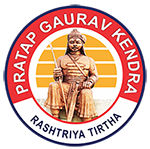Bhakti Dham

Mewar, with its valor, sacrifice, and devotion, has also been a center of spirituality and religious practices. Various pilgrimage sites dedicated to Vaishnavism, Shaivism, Shaktism, and Jainism can be found at different locations, attesting to its rich spiritual heritage. Keeping this in mind, the Pratap Gaurav Kendra has established a ‘National Pilgrimage’ known as a Bhakti Dham. This pilgrimage site incorporates seven holy places of Mewar and installations of Lord Vinayaka and Ram Darbar. In the past 4-5 years, this place has gained recognition as a center of faith for the local population and has become a noteworthy pilgrimage destination for tourists.

Shri Riddhi Siddhi Vinayak Temple
The first revered temple in Bhaktidham is dedicated to Lord
Ganesha and is known as Shri Riddhi Siddhi Vinayak Temple.
The founder and bestower of intellect, the temple houses the enchanting idol of Lord Ganesha, accompanied by Riddhi-Siddhi and his vahana (vehicle) Mushak.
Visitors desiring to perform special worship and archana for Lord Ganesha can register in advance for the same.
Read more
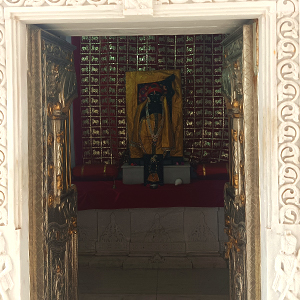
ShreeNath Ji Mandir
Located approximately 41 kilometers from Udaipur in the village of
Sinhad, now known as Shreenathdwar, Shri Shreenath Ji is the main seat of the Vallabh Sampradaya (Pushtimarg or Shuddhadvaita philosophy) dedicated to the childhood form of Lord Krishna, the beloved Ladle Lal Shri Krishna.
The temple houses an image of Shri Shreenath Ji, and the deity’s replica is consecrated in Bhaktidham.
The custodians of this temple are followers of Pushtimarg and are devoted to the worship of Shri Thakurji in accordance with the Pushtimarg traditions.
Visitors can fulfill their desires by registering in advance for the pilgrimage to fulfill the wishes of Shri Shreenath Ji.
According to Pushtimarg literature, orders from Aurangzeb led to the destruction of the idols and temples of both Shri Shreenath Ji and Giriraj Ji. Later, the divine images were brought to Mevad by the Mahant Shri Gusainji Damodarlal Ji from Mathura.
Due to Aurangzeb’s fear, no state provided protection to the idols. Finally, Maharana Raj Singh of Mewar invited them to Mewar. In Samvat 1728, during the month of Kartik, Shri Shreenath Ji arrived in Sinhad. The temple was built, and their Patotsav (ceremonial worship) was celebrated on the seventh Saturday of the dark fortnight in the month of Phalgun.
Read more
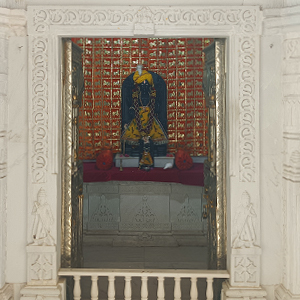
Shree Dwarkadhish Ji Mandir
The third seat of Shri Dwarikadheesh Ji, associated with the Vallabh
Sampradaya (Path of Grace or Pure Non-dualism Philosophy), is located in the palace on the banks of the Pala in Aasotiya village, 68 kilometers away from Udaipur in the Rajasamand district. Currently, Aasotiya is known as Kankroli, and Rajasamand is the district headquarters. Established in the form of the deity Dwarikadheesh, the mountain associated with the teachings of Shri Vallabhacharya, the third son of Shri Vallabhacharya, Balakrishnalal Ji, is present here in a servitor form. According to the Shrimad Bhagavat Mahapuran, they have previously manifested as a servitor to King Ambarish. They were established here a year prior to the arrival of Shri Nath Ji in Mewar. At this place, one can register their desires and perform manorath by coming here through prior registration.
Read more

Shree Charbhuja Ji Mandir
Temples of Lord Charbhujanath are established in every village in Mewar,
making it clear that the Vaishnav tradition in Mewar has been influenced by the Smarta tradition for about 1000 years and is still prevalent in the local customs. The deity Charbhujanath is enshrined near the village of Sevantri, about 90 kilometers away from Udaipur, in the fort of Gadbore. The worship practices here have evolved by combining Smarta and other traditions according to the time but still show a strong influence of the Smarta tradition. The main festival here is Devjhooleeni Ekadashi, where the deity is taken to the nearby Ganga site (water reservoir) for immersion. On this day, more than 100,000 devotees gather in Gadbore. The preferred deity of the people of Mewar, Charbhujanath, is established in the Prabhu Gorav Kendra of the Bhakti Dham. The main ritual involves taking the festival deity for a bath in the nearby water reservoir. Registration for personal desires can also be done at this location.
Read more
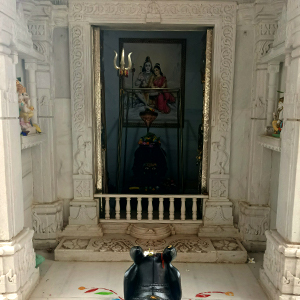
Shree Ekling Nath Ji Mandir
Shri Ekalings Ji is the principal deity of the Mevad region and the
main seat of the Lakulish tradition in India. It is located in the village of Kailaspuri, 22 kilometers from Udaipur. It is accepted as the chosen deity of Mevad and is consecrated by Maharaja Adhiraj.
According to the records of Bappa Rawal, the temple was built by him in the year 724 AD. At that time, a Ban Ling (Shiva Linga with an arrow-shaped top) was installed. In the 15th century, Maharana Raimal renovated the temple and installed a Panchamukha Shiva Linga according to the traditions of the Lakulish sect.
The Panchamukha Shiva Linga represents the five faces of Shiva, with the east facing being Sadyojat (Earth), west facing Vamadeva (Water), south facing Aghor (Fire), north facing Tatpurush (Air), and upward facing Ishan (Sky). In the temple complex, there is also a Vaishnav temple dedicated to Vindhyavasini along with Lakulish.
Pratap Gaurav Kendra in Bhakti Dham also has an idol of Panchamukha Ekalings Nath. Rudrabhishek is organized on the occasion of Mahashivratri.
Read more

Shree Sawariya Ji Mandir
Shri Sanwaliya Ji, an ancient manifestation, has been revered by
the Ramandi Vairagi Vaishnavas for about 450 years. The temple is located in Mandaphiya village, approximately 79 kilometers from Udaipur.
Similar forms of Sanwaliya Ji are also worshipped in other places in Mevad, such as the Lakhad Shyam temple near Jagat-Bambor and Kotdi Charbujanath near Uthrad. The idol of Krishna in the form of Chaturbhuj Vishnu is enshrined here.
Sanwaliya Ji is considered the form of Krishna with Chaturbhuj Vishnu. Devotees can register and perform worship and Rudrabhishek on the occasion of Mahashivratri in the Bhakti Dham.
Read more
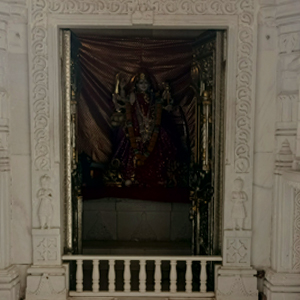
Shree Chamunda Mata Mandir
The worship of Mahishasuramardini has been a tradition in Mevad
- since ancient times. While Goddess Bayan Mata is considered the Kul Devi of Mevad, Chamunda Mata is the preferred deity of most Maharajas.
- Maharana Pratap established the Chamunda Mata Temple in Chavand after the battle. Chavand is approximately 64 kilometers away from Udaipur. Various Chamunda Mata temples are present in different locations in Mevad.
- The Chamunda Mata Temple in Pratap Gaurav Kendra organizes special worship and rituals not only during both Navaratris but also during the Gupta Navratris. Devotees can register for Durga Puja and perform it according to Vaishnav traditions.
Read more

Shree Kesariya Ji Mandir
In Mevad, there are several Jain Tirths, and one of the prominent
- ones is the temple of Lord Adinath (Rishabhadev) in Dhulev. Kesharia Ji or Dhulev village is about 65 kilometers away from Udaipur.
- Lord Rishabhadev is worshipped here by followers of Jain, Vaishnav, and Shaiva traditions. The Bhil community also considers him as Pashupati in the Shaiva tradition. The Jain temple celebrates a grand festival on Chaitra Krishna Saptami, marking the birth anniversary of Lord Rishabhadev.
- The temple is a unique place where Vedic and non-Vedic worship of the deity takes place. It is a symbol of religious harmony where Lord Rishabhadev is worshipped with saffron paste, symbolizing Jain tradition.
.
Read more
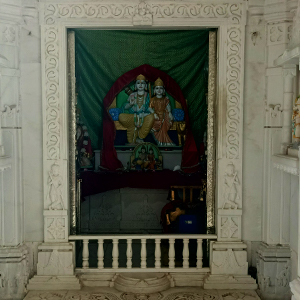
Shree Ram Darbar Mandir
The Bhakti Dham in Pratap Gaurav Kendra houses the Ram
- Darbar, where idols of Lord Shri Ramchandra Ji, Mata Janaki, Shri Lakshman Ji, and Shri Hanuman Ji are installed.
Read more
